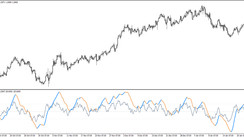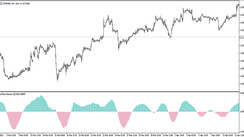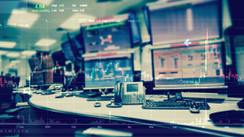In the complex world of financial markets, algorithmic trading has risen to prominence as a robust method of executing large-scale trades while minimizing market disruption. Essentially, algorithmic trading harnesses computer algorithms, which are essentially rule sets that govern computing tasks, to handle voluminous trades, fragmenting them into smaller lots to prevent significant price fluctuations.
The allure of algorithmic trading is its ability to ensure optimal trade execution by minimizing human involvement. The capacity to efficiently operate across multiple markets and assets surpasses the abilities of even the most experienced human trader.
High-Frequency Trading: The Next Step
Taking algorithmic trading up a notch is High-Frequency Trading (HFT), often described as 'algorithmic trading on turbocharge'. As the name implies, HFT is characterized by executing thousands of trades at lightning-fast speeds.
The primary objective here is to make minuscule profits per trade by taking advantage of price differences for the same asset in different markets. It stands in stark contrast to traditional long-term investing strategies, relying on swift, short-term market operations to generate profits.
Factors like technological advancements, the growing complexity of financial products, and a constant push for efficient trading and reduced transaction costs have led to the integration of algorithmic trading and HFT in the financial markets.
Although algorithmic trading and HFT have seemingly enhanced market liquidity and asset pricing consistency, they have also brought certain risks to the fore, notably their ability to augment systemic risk.
Systemic Risk Amplification: A Major Concern
One of the most significant risks associated with algorithmic HFT is its potential to threaten the stability of the financial system. A report by the International Organization of Securities Commissions (IOSCO) in July 2011 highlighted how algorithms that operate across markets could rapidly transmit shocks from one market to the next, thereby magnifying systemic risk. The May 2010 Flash Crash served as a potent example of this phenomenon.
During the Flash Crash, major US equity indices experienced an alarming plunge and subsequent rebound within a few minutes, startling investors. A litany of stocks and exchange-traded funds (ETFs) experienced chaotic price movements, underlining the risk potential of algorithmic trading and HFT.
The Role of 'Spoofing' in Market Disruptions
'Spoofing' in financial markets refers to a deceptive trading strategy employed by some traders to manipulate market perceptions and subsequently, asset prices. The method involves placing large numbers of fake or 'spoof' orders with the intent to cancel them before fulfillment.
A perfect example of 'spoofing' causing major disruptions was in the case of Navinder Singh Sarao, a London-based trader, who was implicated in the Flash Crash of 2010. Sarao was said to have placed numerous large, unfilled orders that significantly influenced market perceptions and trading activities.
This tactic of spoofing is like a market mirage. It presents an illusion of a high demand or supply for a particular asset, swaying other traders' decisions based on this skewed perception. For instance, a spoofer might propose selling a significant quantity of a stock slightly higher than the current price. As other sellers scramble to be a part of the perceived action, resulting in a price dip, the spoofer swiftly cancels their sell orders and instead buys the stock at a lower price.
However, the spoofer doesn't stop there. After the initial transaction, they may place large buy orders, creating an impression of substantial buying interest. This manipulative move results in driving the price up again, enabling the spoofer to sell their recently acquired stock at a higher price, therefore securing a handsome profit. The cycle then repeats.
Though allegations pointed to Sarao as a significant contributor to the Flash Crash, it opened a broader conversation about the potential of a single trader to cause such a colossal market disturbance. Regardless, the event illuminated the potent risks that spoofing poses to the market, emphasizing how algorithmic HFT could potentially amplify systemic risks.
Safeguarding the financial market from such manipulative strategies like 'spoofing' is an ongoing challenge for regulatory bodies. They need to constantly evolve their tactics and implement stringent rules to ensure the integrity of the market, so investors can trade with confidence. In a nutshell, the phenomenon of 'spoofing' underscores the necessity for stronger surveillance and enforcement in the modern, technologically driven marketplace.
How Algorithmic HFT Intensifies Systemic Risk
Increasing Volatility
The present-day markets are dominated by algorithmic HFT activity, and the inherent competitive nature of the algorithms can lead to instant market reactions. During unstable market conditions, algorithms might significantly broaden their bid-ask spreads or stop trading altogether, diminishing liquidity and exacerbating volatility.
Ripple Effects
In the interconnected global economy, a collapse in a major market or asset class often triggers a chain reaction affecting other markets and asset classes.
Uncertainty
Algorithmic HFT contributes significantly to market volatility, causing investor anxiety and impacting consumer confidence in the long run.
Future Outlook and Mitigation Strategies
Despite the risks, the financial world is unlikely to see a reversal in the usage of algorithmic HFT. However, regulatory authorities are becoming increasingly aware of the systemic risks posed by algorithmic HFT. They have responded by tightening the regulatory framework and adopting a more vigilant approach to monitoring these trading activities.
Here are some of the mitigation strategies that could be employed:
Stress Testing of Algorithms
Before an algorithm is deployed, it should undergo rigorous testing under a variety of market conditions. This would minimize the potential for an algorithm to malfunction under stressful conditions and ensure that it can adapt to rapidly changing market dynamics.
Enhanced Market Surveillance
Technological advancements can enable regulatory bodies to implement sophisticated surveillance systems capable of monitoring algorithmic HFT in real-time. This would allow them to spot potentially harmful trading behavior before it escalates into a full-blown crisis.
Regulatory Measures
Regulators can enforce stricter rules on algorithmic HFT, including mandatory risk controls, transparent reporting requirements, and rules against manipulative trading practices like spoofing.
Investment in Technology
Trading firms and regulatory bodies need to invest in state-of-the-art technology to manage the risks associated with algorithmic HFT. This includes machine learning techniques to predict and counteract potential market disruptions caused by algorithmic trading.
Market-Wide Circuit Breakers
These are mechanisms that halt trading when severe price declines threaten market integrity. Circuit breakers can limit the damage caused by sudden market disruptions and give traders and algorithms time to reevaluate their strategies.
The Balancing Act: Managing High-Frequency Trading in a Modern Financial Ecosystem
As we reach the end of our exploration into the world of algorithmic high-frequency trading (HFT), it becomes clear that this trading approach is a double-edged sword. On one side, it facilitates efficient, rapid transactions, potentially improving market liquidity and fostering a level playing field for different assets. However, on the other side, it carries an undeniable risk of exacerbating systemic threats and catalyzing market volatility.
A key concern is the potential of a single algorithmic malfunction to spiral into a substantial financial debacle. The Knight Capital fiasco serves as a stark reminder of this risk, underlining the need for robust regulatory measures and safeguards.
Equally noteworthy is the role of 'spoofing' in precipitating market disruptions. This deceptive practice can warp the true demand-supply dynamics of an asset, triggering artificial price movements that can detrimentally impact individual and institutional investors alike. The Flash Crash of 2010 underscores the magnitude of this potential damage.
Despite these challenges, regulators and exchanges worldwide have shown determination in their efforts to mitigate the risks associated with HFT. From implementing 'kill switches' to introducing circuit-breakers and enforcing stringent pre-trade risk controls, these entities are striving to strike a balance. They aim to harness the benefits of HFT while curtailing its potential to sow instability in the global financial ecosystem.
In the final analysis, algorithmic HFT is not inherently good or bad. It's a tool — a powerful, game-changing one. Just as a hammer can either build a house or smash a window, it all depends on how it's used. Consequently, the onus lies with market participants and regulatory authorities alike to ensure that this tool is wielded with responsibility, care, and a keen awareness of the potential consequences of its misuse.





